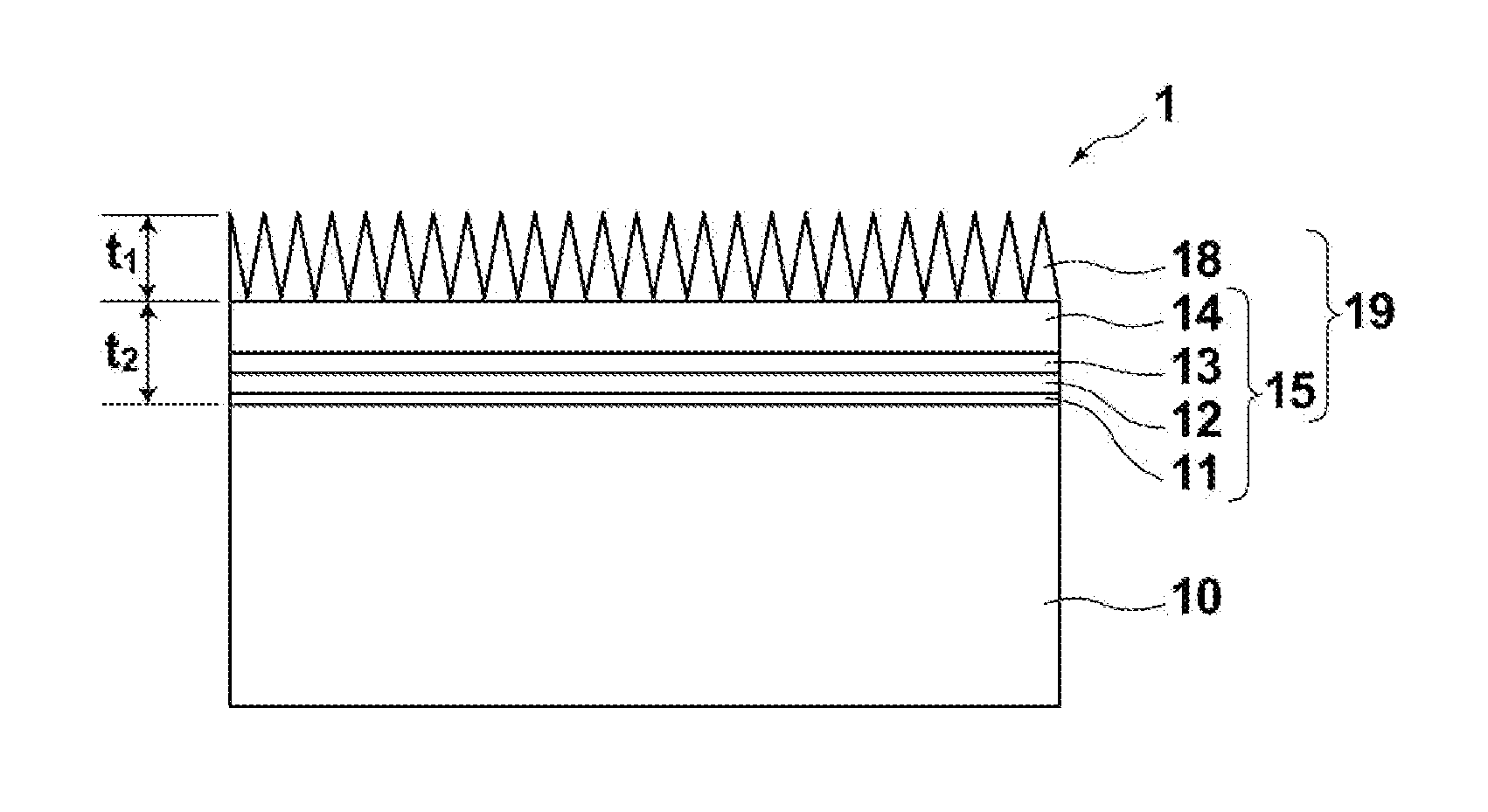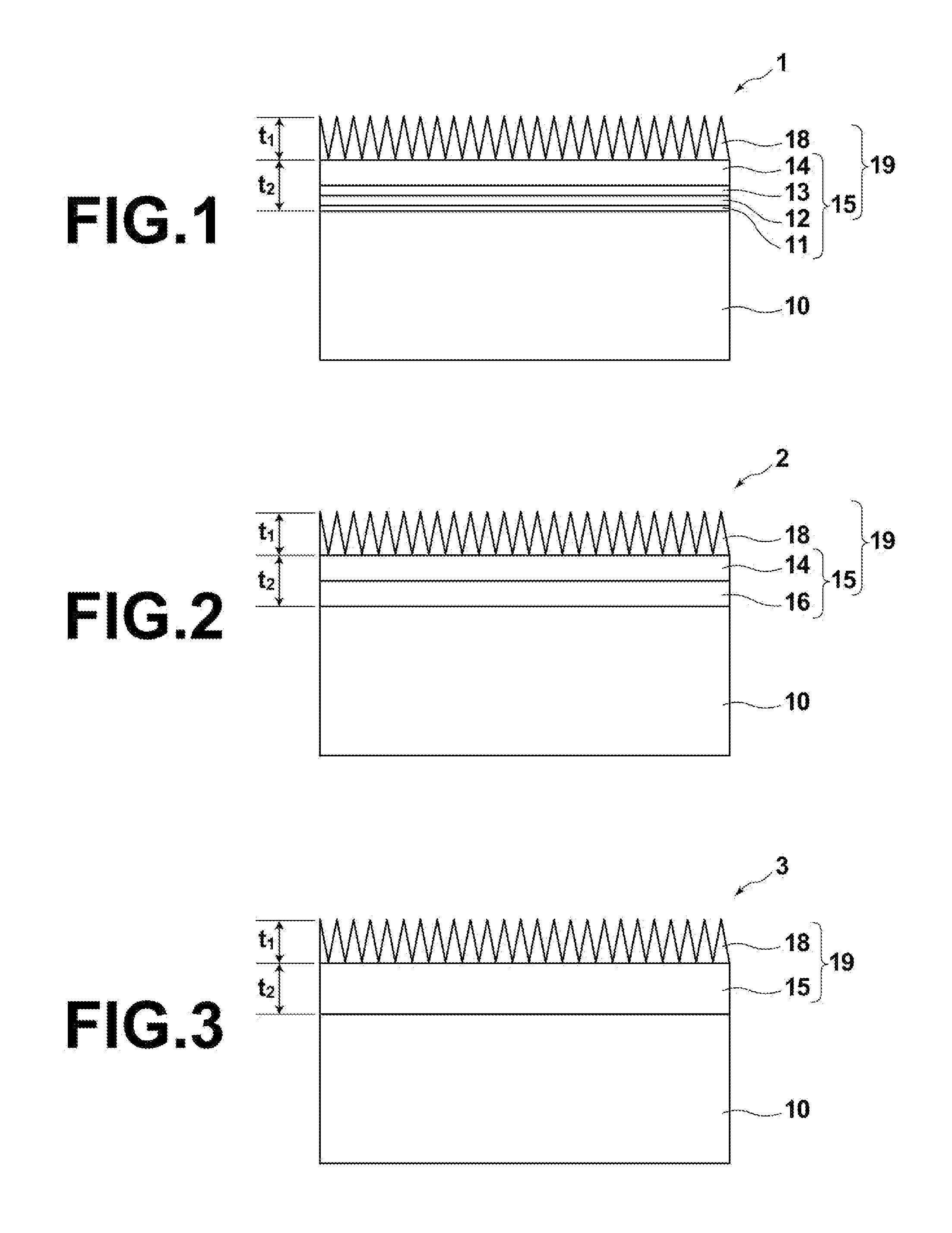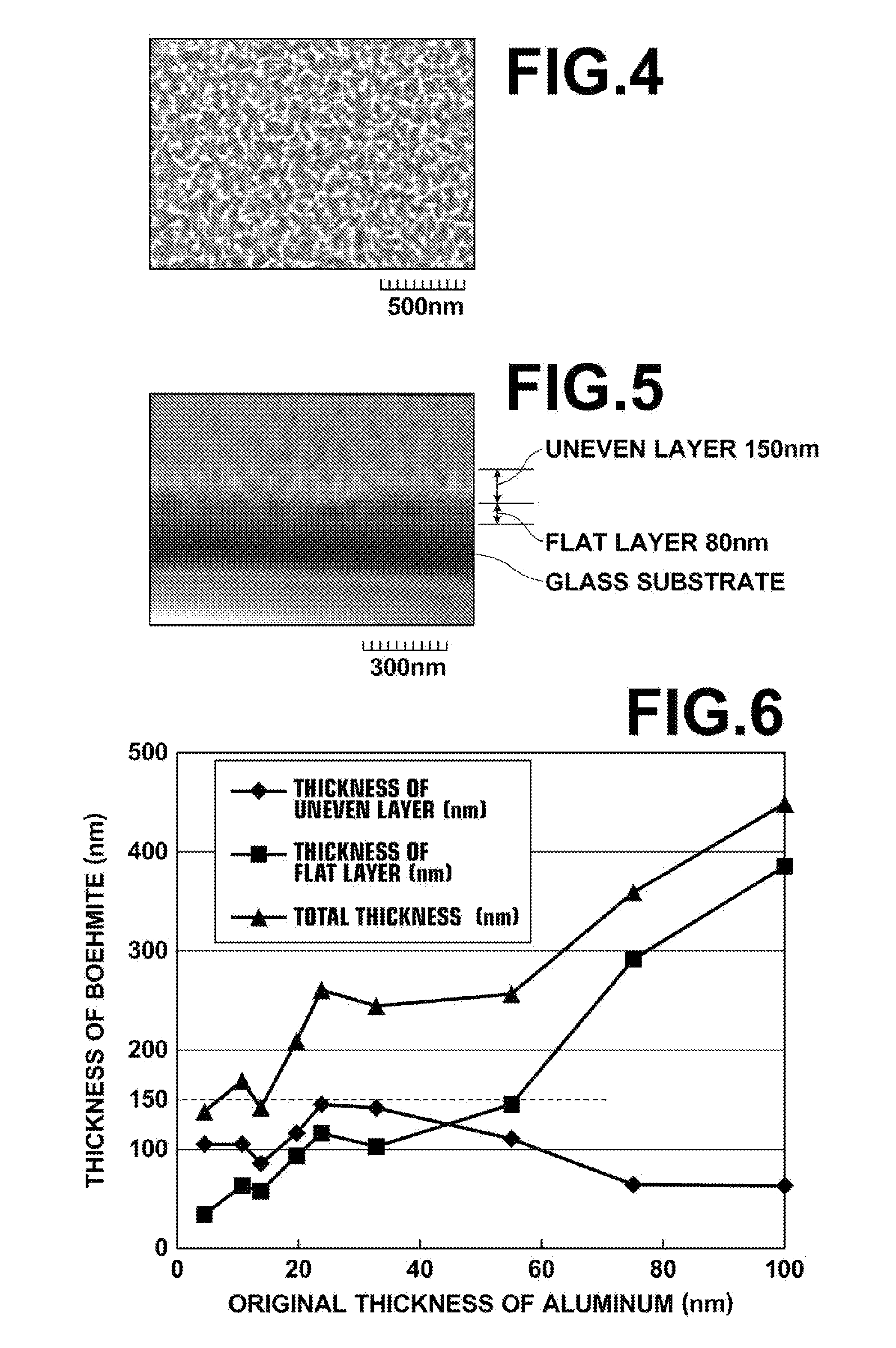Optical member with antireflection film, and method of manufacturing the same
a technology of anti-reflection film and optical member, which is applied in the field of optical member, can solve the problems of low productivity, inability to perform the sol-gel method in batch processing, and the patent literature 2 does not disclose the specific method of forming uneven thin films, so as to achieve high productivity, increase the choice of layers, and reduce the effect of materials
- Summary
- Abstract
- Description
- Claims
- Application Information
AI Technical Summary
Benefits of technology
Problems solved by technology
Method used
Image
Examples
example 1
[0087]Using an ECR (electron cyclotron resonance) sputtering apparatus, a first SiON layer, a second SiON layer, a SiO2 layer, and an Al2O3 layer were formed in this order on a curved lens surface having a radius of curvature of 36.4 mm of a glass material OHARA S-LAH58 (having a refractive index nd=1.88300) with a maximum deposition angle φMax=62.5°. At this time, each layer was formed by ECR sputtering using Si and Al targets, respectively, with controlling the flow ratio of N2 to O2.
[0088]The first SiON layer (nd=1.75) had a film thickness of 80 nm, the second SiON layer (nd=1.61) had a film thickness of 80 nm, the SiO2 layer (nd=1.48) had a film thickness of 80 nm, and the Al2O3 layer had a film thickness of 30 nm. It should be noted that the film thickness here refers to the film thickness at the center portion of the lens, which is the largest thickness.
[0089]After the uppermost Al2O3 layer was formed, a hot water treatment was performed by immersing the layers in boiling wate...
example 2
[0091]Using an ECR (electron cyclotron resonance) sputtering apparatus, an AIN layer, an AlON layer, a SiN layer, a first SiON layer, a second SiON layer, a SiO2 layer, and an Al2O3 layer were formed in this order on a curved lens surface having a radius of curvature of 36.4 mm of a glass material OHARA S-LAH58 (having a refractive index nd=1.88300) with a maximum deposition angle φMax=62.5°. At this time, each layer was formed by ECR sputtering using Si and Al targets, respectively, with controlling the flow ratio of N2 to O2.
[0092]The AIN layer (nd=2.01) had a film thickness of 40 nm, the AlON layer (refractive index nd=1.95) had a film thickness of 40 nm, the SiN layer (nd=1.91) had a film thickness of 40 nm, the first SiON layer (nd=1.64) had a film thickness of 40 nm, the second SiON layer (nd=1.55) had a film thickness of 40 nm, the SiO2 layer (nd=1.46) had a film thickness of 40 nm, and the Al2O3 layer had a film thickness of 30 nm.
[0093]After the uppermost Al2O3 layer was fo...
PUM
| Property | Measurement | Unit |
|---|---|---|
| thickness | aaaaa | aaaaa |
| thickness | aaaaa | aaaaa |
| thickness | aaaaa | aaaaa |
Abstract
Description
Claims
Application Information
 Login to View More
Login to View More - Generate Ideas
- Intellectual Property
- Life Sciences
- Materials
- Tech Scout
- Unparalleled Data Quality
- Higher Quality Content
- 60% Fewer Hallucinations
Browse by: Latest US Patents, China's latest patents, Technical Efficacy Thesaurus, Application Domain, Technology Topic, Popular Technical Reports.
© 2025 PatSnap. All rights reserved.Legal|Privacy policy|Modern Slavery Act Transparency Statement|Sitemap|About US| Contact US: help@patsnap.com



